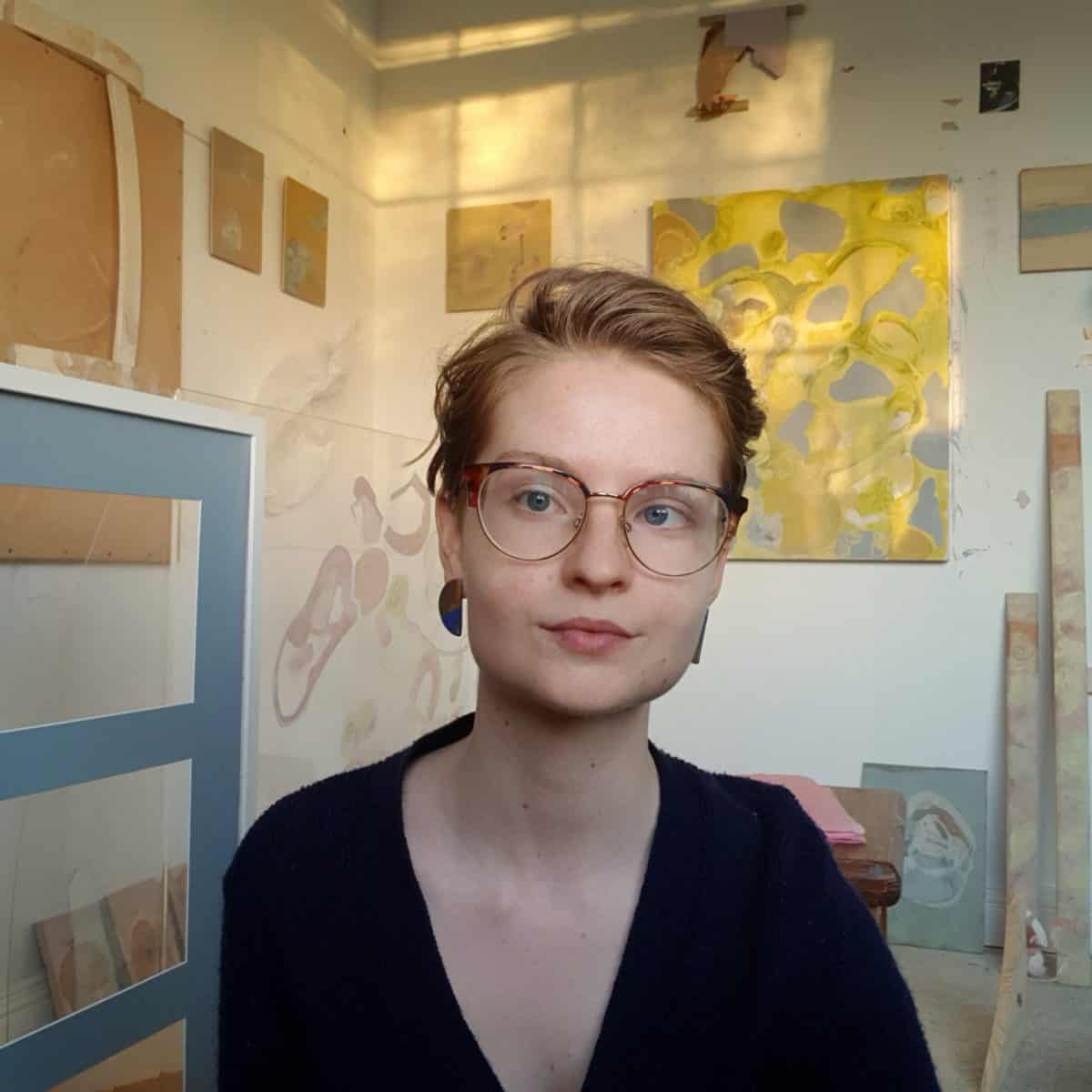English version below.
L’inspiration ce n’est pas quelque chose que l’on trouve, c’est une sensibilité.
Sorcha McNamara
Après l’exposition « (dis)attachments » présentée à la Hyde Bridge Gallery de Sligo, l’artiste irlandaise Sorcha McNamara a accepté de répondre aux questions du Tote Bag et de revenir sur son parcours. Elle débute à l’école d’art et de design de Limerick jusqu’à devenir une artiste expérimentée travaillant de multiples techniques. Dans cet article, l’artiste nous parle de son travail, de ses goûts mais aussi de sa vision de l’art en général.
Quand nous avons abordé la question de son style, Sorcha m’a immédiatement répondu ceci : « le mot style a toujours été un mot qu’on a appris aux artistes à éviter. »
À la place, elle m’a décrit le style de ses cheveux : « ébouriffé, doux, en pagaille, dynamique, texturé ».
Elle explique que ces mots peuvent également décrire son travail, ou pas, car la fonction de description est laissée au spectateur.
Sorcha est une artiste multitâche et perfectionniste : comment sait-elle alors quand un projet est fini ? Elle explique qu’elle sait, tout simplement. « Bien sûr avec certains projets c’est plus facile qu’avec d’autres. En fait, il n’y a pas forcément de début, de milieu et de fin. Pour moi, un projet peut autant prendre 20 secondes que 3 ans. »
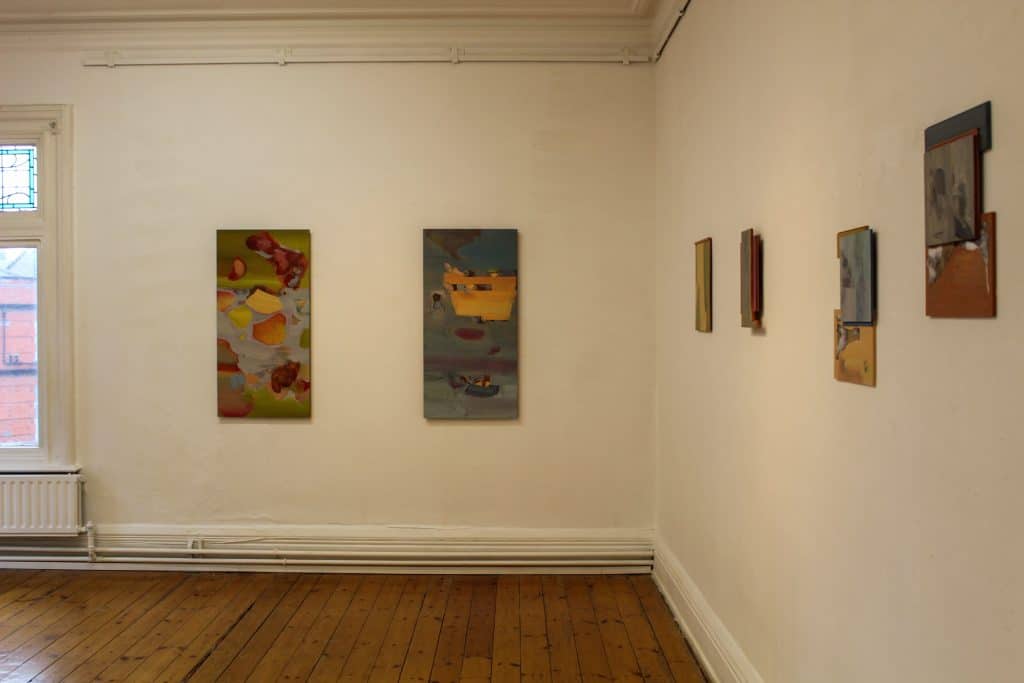
Pour ce qui est de l’inspiration, elle explique qu’elle la puise partout. « L’inspiration ce n’est pas quelque chose que l’on trouve, c’est une sensibilité, c’est quelque chose qui nous frappe soudainement, c’est quelque chose qui est toujours là, quelque part. » Elle énonce que son processus créatif est même parfois guidé par les matériaux eux-mêmes. Parmi ses influences, elle cite « la petitesse des mouvements de l’humain, dans la vastitude de l’inconnu, la gestuelle d’un corps, la lumière du coucher du soleil, le langage mathématique et la façon dont les écrivains et les musiciens parlent de leur travail.
Sorcha est également inspirée par une multitude d’artistes dont le travail l’a marquée. Parmi ces artistes, elle cite le post-minimaliste Richard Tuttle qui travaille comme elle avec les textures afin de créer des pièces uniques. « Je suis particulièrement attirée par les artistes qui écrivent à côté de leurs travaux afin de les expliquer, les artistes qui savent mettre en mot leur travail. »
Agnès Martin, l’une des inspirations de Richard Tuttle est aussi une influence pour Sorcha, ses écrits ayant été artistiquement révélateurs pour elle.
Elle puise également son inspiration chez des artistes irlandais tels que Maud Cotter ou Niamh O’Malley qui, selon elle, « ont une telle sensibilité dans leur langage et sont capables de parler de leur travail avec des mots tellement beaux ».
Sorcha conclut en général qu’elle « admire tous les artistes qui ont de belles convictions ».
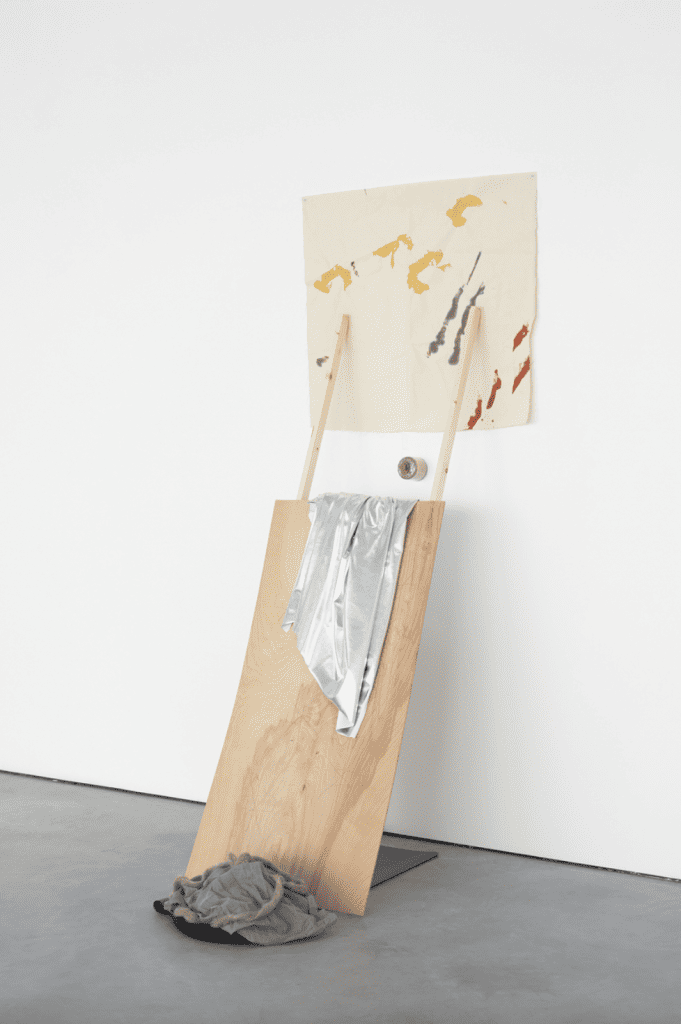
Même si ce n’est pas son travail à plein temps, Sorcha explique qu’émotionnellement, spirituellement et mentalement, faire de l’art reste sa principale activité.
Qu’en est-il de la vision de l’artiste sur le monde d’aujourd’hui ? Avec tous les outils à notre disposition, tout un chacun peut-il se dire artiste ?
Il n’y a rien qui puisse empêcher quelqu’un de se dire artiste mais ça ne veut pas dire que tout le monde qui dit l’être, l’est. Faire de l’art, être un artiste c’est presque une vocation. C’est une discipline. La vie, ainsi que les convictions d’un artiste sont coincées entre celle d’un grand sage, et celle d’un grand athlète. Je ne suis pas légitime de dire de telle ou telle personne qu’il ou elle est un ou une artiste. Néanmoins, pour moi, c’est une personne qui peut donner le maximum de son temps et de son énergie à son travail afin de développer ses techniques et de toujours trouver quelque chose de surprenant à mettre dans son travail. C’est quelqu’un qui apprend continuellement.
Sorcha McNamara
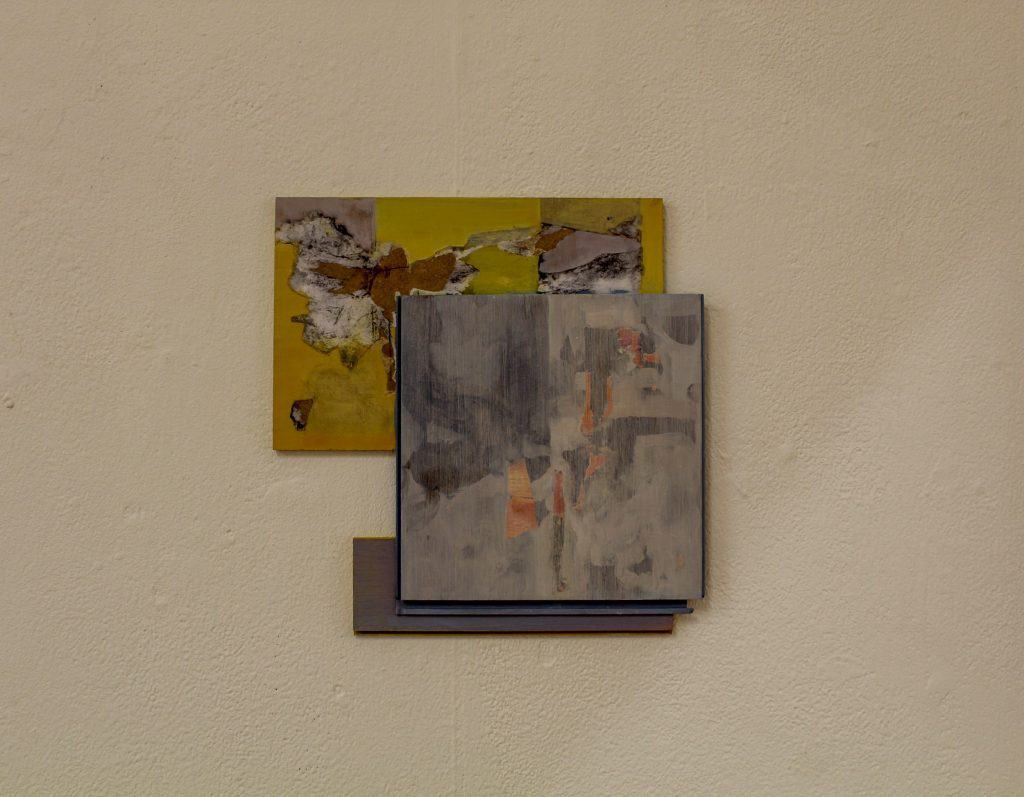
Sorcha a, comme tous les artistes, trouvé sa façon unique de s’exprimer en « regardant, percevant, pensant mais surtout en pratiquant ». Elle a également trouvé sa pâte en faisant des erreurs et du “mauvais” travail. Finalement, elle explique que même aujourd’hui elle n’a pas encore totalement trouvé sa voix. Elle continue de développer de nouvelles techniques avec de nouvelles couleurs et de nouveaux matériaux. « J’ai appris à ouvrir ma pratique à de nouvelles façons de faire et de penser. Je fais par exemple plus de travail collaboratif, j’accepte donc que de nouvelles voix s’ajoutent à mon processus créatif. Le travail peut alors évoluer et prendre de nouvelles formes. Lorsqu’il s’agit de mieux faire mon travail, j’ai peut donner beaucoup de ma personne. » – Sorcha McNamara.
Pour finir, elle nous confie ce qu’elle ressent tous les matins, au réveil : « Cela dépend des matins. Le plus souvent je suis fatiguée car j’ai tendance à travailler la nuit. Je me sens extrêmement chanceuse et privilégiée de pouvoir faire ce que je fais mais en même temps, le travail d’une artiste n’est pour beaucoup pas encore reconnu comme un réel travail. Parce que je ne me fais pas directement d’argent de mes œuvres ou parce que ma carrière ne convient pas au système capitaliste en place, je ressens parfois un sentiment d’échec. Je pense que beaucoup d’artistes peuvent comprendre, car c’est un choix de vie précaire. C’est pour cette raison que l’imminent projet BIA (aide financière hebdomadaire versée aux artistes) mis en place en Irlande doit se développer pour autant d’artistes que possible. C’est un petit pas pour viabiliser et promouvoir les carrières artistiques. » – Sorcha McNamara.
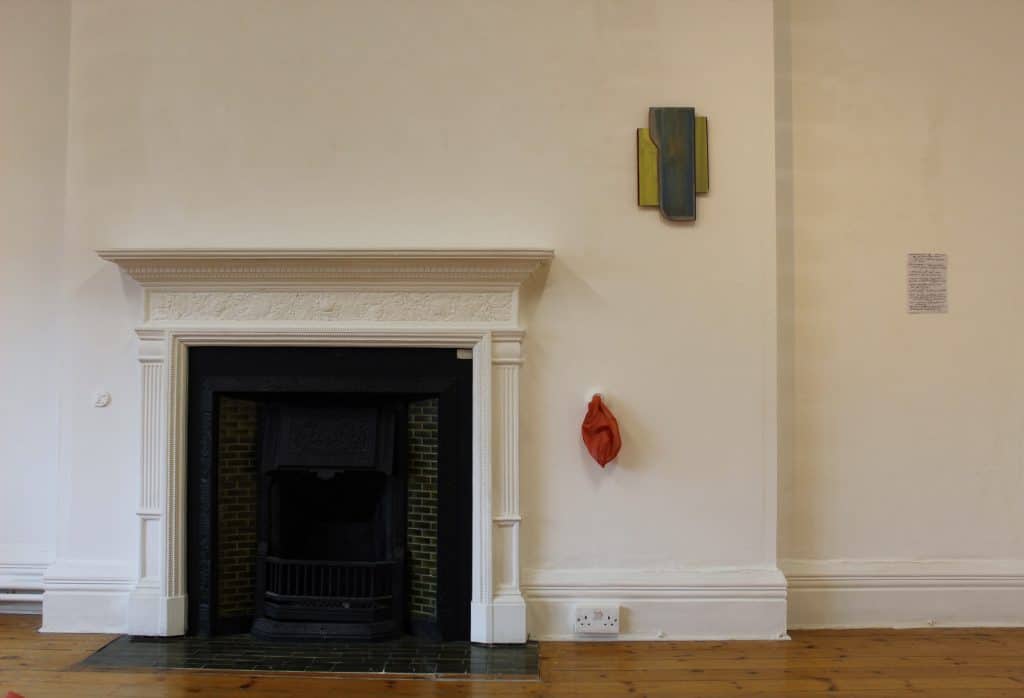
Le Tote Bag adresse un remerciement spécial à Sorcha McNamara pour son temps et ses réponses aux questions.
****
Sorcha McNamara – English
Inspiration is not something that can be searched for, it’s a sensibility.
Sorcha McNamara
After the (dis)attachments exhibition that took place at The Hyde Bridge Gallery of Sligo, Sorcha McNamara accepted giving answers to Le Tote Bag’s questions. She begins at the Limerick School of Art and Design to become an experienced artist working with painting, sculpture and installations. The artist will discuss her work, her likes and dislikes but also about art in general.
When I asked Sorcha about her style she immediately explained that : « style is a word that artists have always been taught to avoid for some reason ». She instead uses the style of her hair as a reference point, describing it as « tousled, low-maintenance, feathery, textured, dynamic. »
These words may help to also describe her work, or not – that judgement is left to the viewers.
As an artist, Sorcha is multitask and perfectionist. She explains that it’s not that hard to know the ending of a project despite what you may think. « You just know. Of course, with certain things it is easier to know when it reaches the stage of completion. With other things, it’s not so straightforward, there is no clear beginning, middle and end to the making. For me, making a piece can take any time between twenty seconds and three years. »
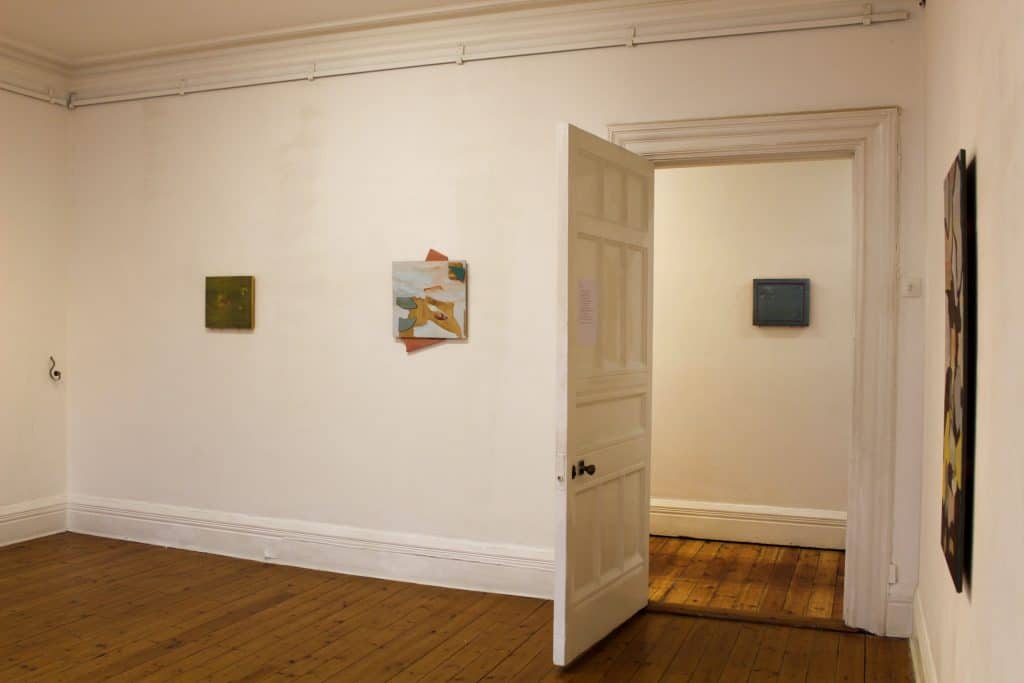
Sorcha takes inspiration from wherever she happens to be. She says that « inspiration is not something that can be searched for, it’s not something that hits suddenly. It’s a sensibility; it’s something that is there all the time. »
She also explains that her work is driven by a process of seeking. Seeking for the right material. Sometimes it’s even the material itself that guides the work. The artists is influenced by « the smallness of human movement against the vastness of the unknown; bodily gestures; evening light, mathematical language and how writers and musicians talk about their work ».
Sorcha’s inspiration comes from her favorite artists as well. The post-minimalist and poetic Richard Tuttle that works with a lot of textures and colours to build unique pieces. « I am particularly drawn to artists who write alongside their visual work, or artists who have a firm grip on the verbal side of what they do. » – Sorcha McNamara.
Agnes Martin, who inspired Richard Tuttle, is also an influence to Sorcha.
Her writing has been hugely thought-provoking to me as an artist.
Sorcha McNamara
She also takes influence from Irish artists such as Maud Cotter or Niamh O’Malley. She explains that « they have such a strong sensibility with language, and are able to express their work beautifully through words. »
Sorcha concludes : « In general I admire any artist with a strong conviction in their work ».
Even if it’s not her full-time job, Sorcha explains that making art is mentally, spiritually and emotionally her full-time job in her studio in Mayo.
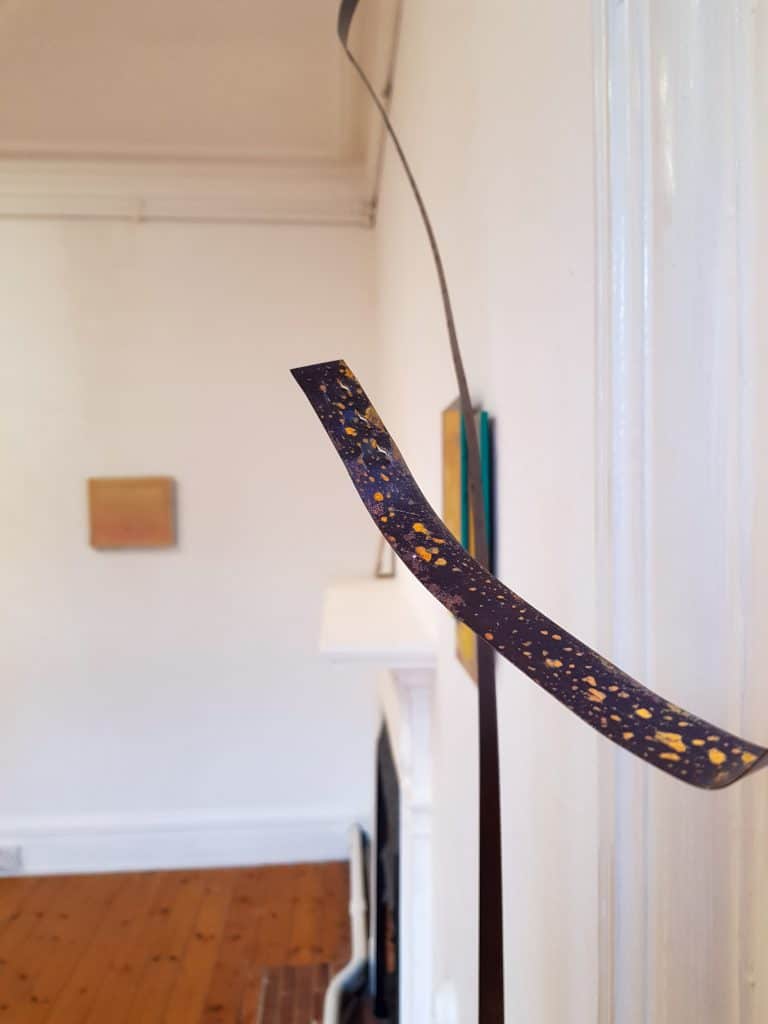
About art in general, I asked Sorcha if she thinks that today, with all of the tools we can easily access, everybody can call himself/herself an artist. Her answer is really interesting :
There is nothing stopping anyone calling themselves an artist. This does not mean that everybody is though. Making art, being an artist, is almost a vocation. It’s a discipline. The life of an artist lies somewhere between that of a monk and an athlete, such is the conviction in what they do. I’m not in a position to say what truly makes a ‘real’ artist though. But to me, it is someone who can devote most of their time and energy to their work, to developing their practice, to consistently finding ways to surprise themselves with their work. It is someone who is continuously learning.
Sorcha McNamara
Sorcha found her own way of making art through « looking, perceiving, thinking, and of course doing… « .
But also through making mistakes and “bad” work, if we can call it that way. She says that even now she hasn’t really found her own way yet. She is always developing new techniques with new colors, new materials. « I have learnt to open up my practice to new ways of making and thinking. Through working more collaboratively and allowing different voices into the process, the work is continuously evolving, taking new forms and shapes. In terms of making better work, I have a lot more to give and further to go. » – Sorcha McNamara.
To finish, here is Sorcha’s feelings when she wakes up every morning :
« It depends on the morning. Mostly tired, as I tend to work at night. I feel incredibly lucky and privileged to be able to do what I do. At the same time though, the work of an artist is still not regarded as ‘work’, in the eyes of many. Because I’m not directly making money from my art, or because my career path doesn’t fit into the capitalist machine, there is a certain feeling of failure that comes and goes from time to time. Many artists, I think, identify with this. It’s a precarious path. Which is why it’s so important that the upcoming Basic Income for the Arts Pilot Scheme (weekly financial assistance given to artists) in Ireland goes smoothly for as many artists as possible. It’s a step in the right direction for making a career in the arts a viable option. » – Sorcha McNamara
A special thanks to Sorcha McNamara for her time and her interesting answers to Le Tote Bag’s questions.
